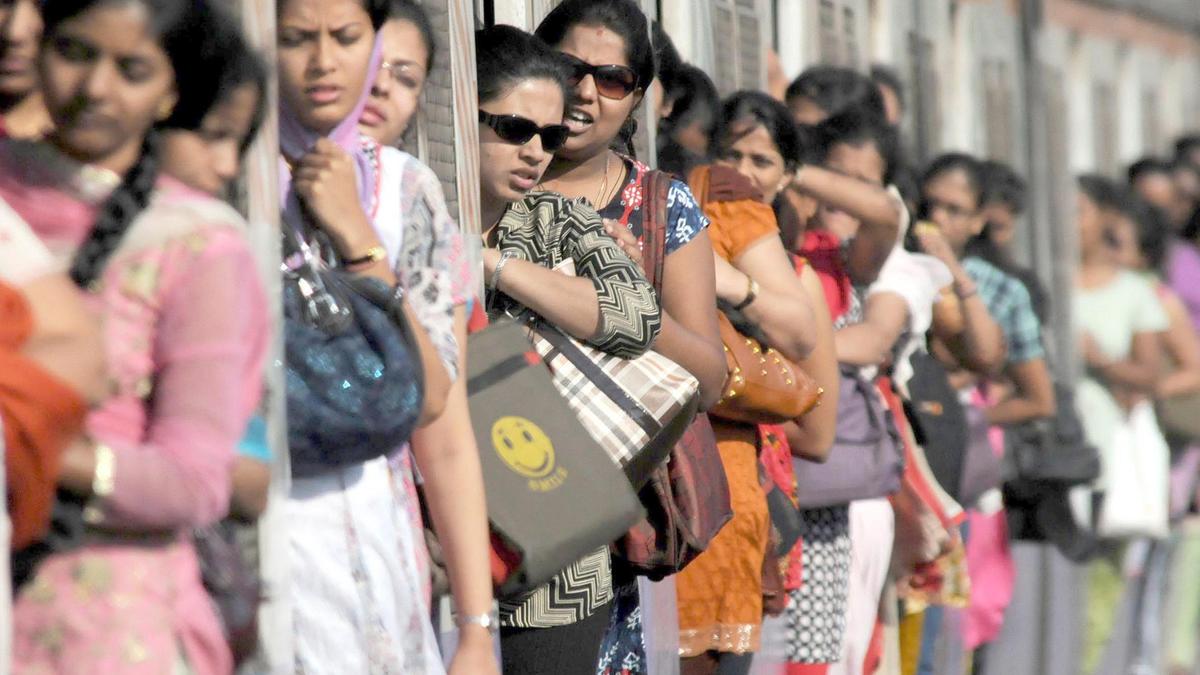
Mapping Mumbai for women: gender-inclusive development plan is a gamechanger that must be replicated across India, say experts Premium
The Hindu
The inclusion of gender in Mumbai’s development plan is a gamechanger that must be replicated across India. The Revised Draft Development Plan 2034 stipulates land reservations in Mumbai’s 24 wards to create physical-social infrastructure for women.
After living in Guwahati and Delhi, Dhritee Bordoloi finds Mumbai to be the safest place in India. But the 24-year-old continues to be cautious when looking for accommodation in the city. As a freelance assistant director, Bordoloi’s hours are erratic and she often returns home late at night. Her priority when house-hunting is a place close to a busy road or highway. “If a flat is too deep inside a maze of lanes, autorickshaw drivers often refuse to come and I may need to walk to the apartment at night,” she says. Quick access to the metro or train stations is another must, she adds.
Each time she relocates, Bordoloi has to stretch her budget to find accommodation that checks these boxes. Her male friends renting in the city have no such worries. “In fact, many of them take apartments a bit further away from the main road to save on rent,” she says. Mimi Sarkar, 30, often thinks of giving up on her Mumbai dream and moving back to her hometown in West Bengal. “The rent is eating into half my earnings and I have no savings,” she says. Working women’s hostels could be a cheaper option but Sarkar says the waiting list is long.
Experiences such as Bordoloi’s and Sarkar’s, and of other women in similarly challenging situations, are why a group of working women came together in an almost decade-long effort to include gender in the Mumbai development plan (DP). In 2020, Mumbai became the first Indian city to include gender in its urban plan, the Revised Draft Development Plan (RDDP) 2034, through land reservations in the city’s 24 wards to create physical-social infrastructure for women. On Women’s Day in March this year, the first tangible result of that effort — a multipurpose housing unit (MHU) for working women — was launched in Goregaon, a suburb in the west of Mumbai. Two dozen more MHUs are expected to come up, along with several other facilities such as skill development centres, and childcare and senior-care facilities.
This inclusion was the result of efforts by the Women and DP Group — a group of women (from the fields of media, architecture, gender studies, law, to name a few) who worked pro bono and pushed the gender agenda through to the city’s development plan. A few of them are now members of the Brihanmumbai Municipal Corporation’s (BMC) six-member Advisory Committee on Gender (ACG) to ensure implementation. “Gender mainstreaming, that is incorporating gender concerns into city planning, is crucial to address issues of access, affordability, and equity,” says senior journalist and urban chronicler Smruti Koppikar. Both Koppikar and Nandita Shah, co-director of Akshara Centre, a not-for-profit working for the empowerment of women and girls in Mumbai, assert that women’s groups across the city had been talking about including gender in city planning for several years.
What does including gender in urban planning really mean? It acknowledges that men and women use urban spaces differently and cities can no longer be designed as per the standard male blueprint. Most Indian cities lack equitable infrastructure, making it difficult for women to move around freely. If you’ve ever tried getting into a bus with a toddler and bags in tow, you’ll know it wasn’t designed with women in mind.
“Urban design must cater to specific parameters in gender inclusive planning to make cities accessible to women and inclusive,” says Prachi Merchant, senior urban planner at BMC. These parameters include lighting, openness, visibility, crowds, security, walk path, availability of public transport and gender diversity.
Merchant says even if infrastructure exists, women need to feel safe accessing them. “Even if you have a wide footpath, if there are high walls abutting it, then it becomes dangerous for a woman to walk. Are private vehicles the only solution?” she asks.

The girl, who was admitted to Aster CMI Hospital with alarming breathlessness and significant pallor, was diagnosed with Wegener’s Granulomatosis (now known as Granulomatosis with Polyangiitis or GPA), a rare autoimmune condition that causes spontaneous bleeding in the lungs, leading to acute respiratory failure.

ACB files case against IPS officer N. Sanjay in Andhra Pradesh. The official is accused of manipulating the tender processes for awarding contract for development and maintenance of AGNI-NOC portal, and conducting awareness meetings for SC/STs. It is alleged that the total value of properties stolen, or involved in the case is estimated at ₹1,75,86,600.









